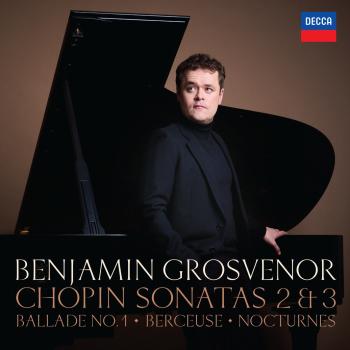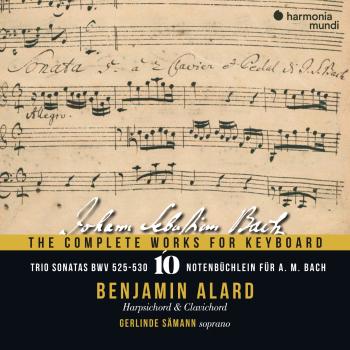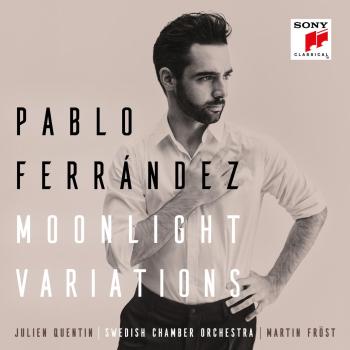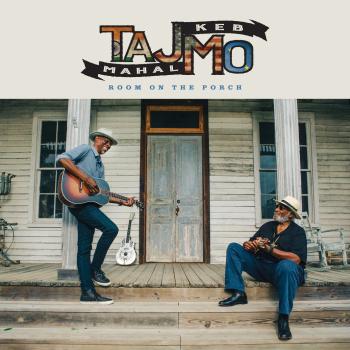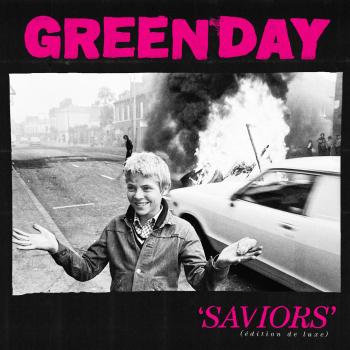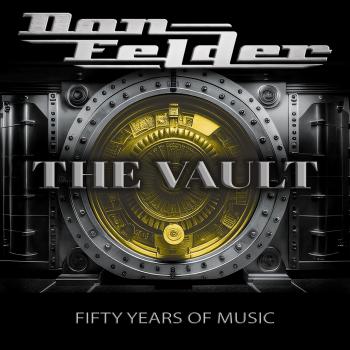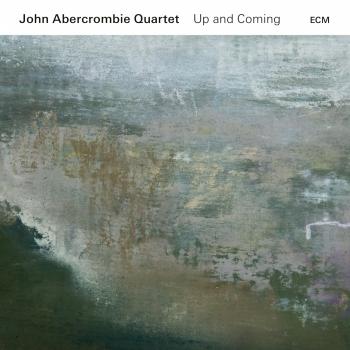
Timeless (Remaster) John Abercrombie Quartet
Album Info
Album Veröffentlichung:
1974
HRA-Veröffentlichung:
06.10.2016
Label: ECM
Genre: Jazz
Subgenre: Fusion
Interpret: John Abercrombie Quartet
Komponist: John Abercrombie, Jan Hammer
Das Album enthält Albumcover Booklet (PDF)
Entschuldigen Sie bitte!
Sehr geehrter HIGHRESAUDIO Besucher,
leider kann das Album zurzeit aufgrund von Länder- und Lizenzbeschränkungen nicht gekauft werden oder uns liegt der offizielle Veröffentlichungstermin für Ihr Land noch nicht vor. Wir aktualisieren unsere Veröffentlichungstermine ein- bis zweimal die Woche. Bitte schauen Sie ab und zu mal wieder rein.
Wir empfehlen Ihnen das Album auf Ihre Merkliste zu setzen.
Wir bedanken uns für Ihr Verständnis und Ihre Geduld.
Ihr, HIGHRESAUDIO
- 1 Lungs 12:18
- 2 Love Song 04:37
- 3 Ralph's Piano Waltz 04:57
- 4 Red and Orange 05:24
- 5 Remembering 04:33
- 6 Timeless 12:02
Info zu Timeless (Remaster)
On Timeless, guitarist John Abercrombie spearheads a session with keyboardist Jan Hammer and drummer Jack DeJohnette for a melding of minds in the first degree.
The trio kicks things off in high gear with “Lungs,” a heaping pile of kindling set ablaze by Hammer’s high-octane staccato, DeJohnette’s explosive hi-hat, and Abercrombie’s unusually frenetic fretwork. A sublime energy is maintained throughout and the payoff is supremely satisfying—all the more so for its brevity, as the music suddenly changes avenues just a few minutes in. Hammer relays between organ and synth, keeping the pace (and the funk) through trailing guitar solos that send notes like cosmic fingers flicking galaxies into outer space. The organ smolders quietly in the background before clinching a new groove, which Abercrombie laces with lines flanged just right for the mix. It all ends in a game of musical jump rope, with Abercrombie skipping over the alternation of drums and organ. “Love Song” is true to its name and is the first of two exquisite conversations between piano and acoustic guitar. Just as the organ trailed long rows in the soil of our attention, the piano comes as a welcome rain for our crop and the guitar like the sun that infuses it. This brings us to “Ralph’s Piano Waltz,” a highlight of these six fine offerings. Like the album as a whole, this track is a superlative balancing act. It’s a construct so seamless that if you don’t find your foot tapping during this one, you might want to make sure it’s still attached. The electric leads speak in their respective languages, but also mimic each other along the way. “Red And Orange” is what might result if Bach had survived into the 1970s as a closeted jazz musician, and is another standout in a set of many. “Remembering” is an alluring chain of tableux and the second of the two duets. Abercrombie sustains details the piano seems content to ignore, loosening those threads from their weave. We end with the title track, which builds slowly from a synth drone peppered with guitar musings to a full-on embrace of space.
This evergreen stands tall in the ECM forest. There is no sense of competition, only mutual reveling in a distinctly nuclear sound. One could easily call it fusion, but if anything it is fused with itself, for it has created every element it seeks to combine. Timeless indeed.
John Abercrombie, guitar
Jan Hammer, organ, synthesizer, piano
Jack DeJohnette, drums
Recorded June 11 & 12, 1974, Generation Sound Studios, New York
Engineers: Tony May and Jan Erik Kongshaug
Produced by Manfred Eicher
Digitally remastered
John Abercrombie
Over a career spanning more than 40 years and nearly 50 albums, John Abercrombie has established himself as one the masters of jazz guitar. Favoring unusual sounds (he played electronic mandolin on McCoy Tyner's 1993 album 4x4) and nontraditional ensembles (recent quartet recordings have included violinist Mark Feldman), Abercrombie is a restless experimenter, working firmly in the jazz tradition while pushing the boundaries of meter and harmony.'
Born on December 16, 1944 in Port Chester, New York, Abercrombie grew up in Greenwich, Connecticut, where he began playing the guitar at age 14. Like many teenagers at the time, he started out imitating Chuck Berry licks. But it was the bluesy music of Barney Kessel that attracted him to jazz. Abercrombie enrolled at Boston's Berklee College of Music and teamed up with other students to play local clubs and bars. One of those clubs, Paul's Mall, was connected to a larger club next door, the Jazz Workshop, where Abercrombie ducked in during his free time to watch John Coltrane and Thelonious Monk.
Abercrombie's appearances at Paul's Mall led to several fortuitous meetings. Organist Johnny Hammond Smith spotted the young Abercrombie and invited him to go on tour while he was still a student. During the same period, Ambercrombie also met the Brecker Brothers, who invited him to become a new part of their group Dreams, which would become one the prominent jazz-rock bands of the late 1960s and early 1970s. Abercrombie appears on the group's eponymous debut album.
After graduating from Berklee, Abercrombie headed to New York, where he quickly became one of New York's most in-demand session players. He recorded with Gil Evans, Gato Barbieri, and Barry Miles, to name a few. He was also a regular with Chico Hamilton?s group. '
But it was in Billy Cobham's band, which also featured the Brecker brothers, that Abercrombie first started to build a following. He was featured on several of Cobham's albums, including Crosswinds, Total Eclipse and Shabazz, all of which staked new ground in fusion jazz. The group was booked into large concert halls and arenas, appearing on bills with such top rock attractions as the Doobie Brothers. It was not, however, the direction Abercrombie had hoped his career would go. 'One night we appeared at the Spectrum in Phildelphia and I thought, what am I doing here?' he said. 'It just didn?t compute.'
In the early 1970s, Abercrombie ran into Manfred Eicher, who invited him to record for ECM. The result was Abercrombie's first solo album, Timeless, in which he was backed by Jan Hammer and Jack DeJohnette. Abercrombie's second album, Gateway, was released in November 1975 with DeJohnette and bassist Dave Holland; a second Gateway recording was released in June 1978.
He then moved on to a traditional quartet format, recording three albums on ECM--Arcade, Abercrombie Quartet, and M--with pianist Richie Beirach, bassist George Mraz and drummer Peter Donald. 'It was extremely important to have that group for many reasons,' Abercrombie told AAJ in 2004. 'It was, of course, a good band, but it was also my first opportunity to really be a leader and to write consistently for the same group of musicians.'
His second group, a trio with bassist Marc Johnson and drummer Peter Erskine, marked the first time he experimented with the guitar synthesizer. This gave him the opportunity to play what he called 'louder, more open music' with a propulsive beat, demonstrated in the group's three releases, Getting There (featuring Michael Brecker) in 1987, Current Events in 1988, and John Abercrombie, Marc Johnson & Peter Erskine in 1989.
From there, he moved to partnerships that he would shuffle and reshuffle for the next 20 years. He reunited with his Gateway bandmembers in 1995 for an album appropriately titled Homecoming, but not before forming yet a third ensemble that would make several recordings together. Abercrombie had long been enamored with the sound of jazz organ, so he teamed with organist Dan Wall and drummer Adam Nussbaum in While We Were Young and Speak of the Devil (both 1993) and, in 1997 Tactics. Another album, titled Open Land, added violinist Mark Feldman and saxophonist Joe Lovano to the mix.
His affiliation with Feldman, in a quartet that included Marc Johnson and drummer Joey Barron, ushered in a period of looser, freer, almost improvisatory playing. 'I like free playing that has some relationship to a melody; very much the way Ornette Coleman used to write all those wonderful songs and then they would play without chords on a lot of them,' he told AAJ. In fact, Abercrombie's work from this period has been compared to chamber music, with its delicacy of sound and telepathic communication between musicians.
Throughout the 1990s and into 2000 and beyond, Abercrombie has continued to pluck from the ranks of jazz royalty--and be plucked for guest appearances on other artists' recordings. One propitious relationship was with guitarist, pianist, and composer Ralph Towner, with whom Abercrombie has worked in a duet setting. (Abercrombie has also worked in guitar duos with John Scofield, for 1993's Solar and with Joe Beck in Coincidence, released in 2007). Abercrombie has also recorded with saxophonist Jan Garbarek and bassist Eddie Gomez.
Abercrombie keeps up a heavy touring schedule and continues to record with ECM, a relationship that has spanned more than 30 years. As he told one interviewer, 'I'd like people to perceive me as having a direct connection to the history of jazz guitar, while expanding some musical boundaries.' That, no doubt, will be his legacy.
Booklet für Timeless (Remaster)

